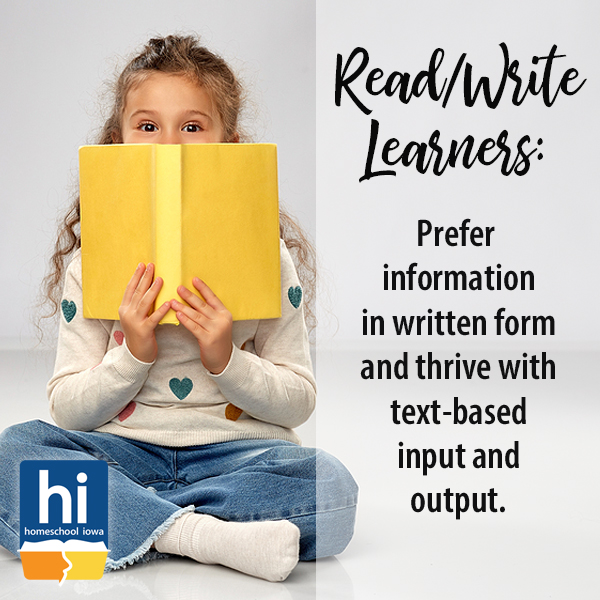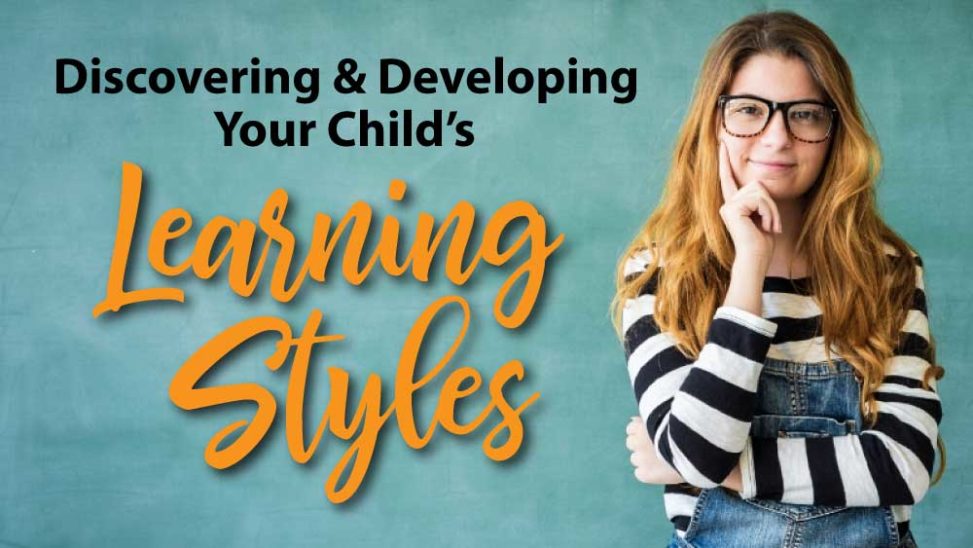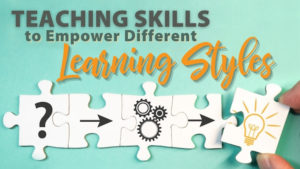Homeschool
Learning Styles
What are the common homeschool learning styles?
And how do you figure out what your child's preferred style is?
Take a few minutes to use this simple homeschool learning styles checklist.
You'll likely spot your child's predominant learning style:
• Visual
• Auditory
• Read/Write
• Kinesthetic
Then use our suggestions to help you adapt your homeschool instruction to your child's learning style.
VISUAL LEARNERS
- Are quick imitators, copying what they “see” demonstrated
- Are distracted by visual stimuli (e.g., a bird outside the window)
- Notice printed or pictured details
- Can often find or see things that others might miss
- Are particularly aware of spatial relationships
- Can grasp information best when it is presented graphically
- May use sight clues when learning spelling words
- Will often doodle or write additional notes on worksheets or handouts
Struggle with:
- Information presented solely in plain text
- Lectures or verbal presentations without visual illustrations
Learn well with:
- Whiteboard presentations
- Wall charts and visual handouts
- Timelines, maps, charts, and graphs
- Information presented with symbols and graphs
- Flow charts
- Labeled diagrams

AUDITORY LEARNERS
- Are enthusiastic verbal communicators and love to chatter
- Can easily remember song lyrics, poems, and television commercials
- Often tap out rhythmic patterns and can replicate them effortlessly
- Sound out words and are phonetic spellers
- Tend to solve problems by talking their way to solutions
- Enjoy listening to the radio or recordings
- Often sing well and express themselves well verbally
- Sometimes start vocalizing when instructed to reading silently
- Can follow directions presented orally
Struggle with:
- Editing and correcting written work
- Reading technical or non-fiction writing
- Paying attention to details on written work
- Distractions from background noise
Learn well with:
- Freedom to subvocalize and point to words while reading
- Verbally delivered instructions
- Field trips with oral descriptions or interview opportunities
- Plays, poetry, and memory work
- Recordings, podcasts, music, rhymes, and echo games

READ/WRITE LEARNERS
- Readily receive information in written form
- Are usually good note-takers
- Are not intimidated by text-based materials and manuals
- Enjoy writing diaries, essays, and reports
- Like solitary reading
Struggle with:
- Information presented solely in oral lecture format
- Creative group projects
- Dramatic or role-playing exercises
- Understanding symbolic representations
Learn well with:
- Traditional textbooks and workbooks
- Internet research
- Dictionary and thesaurus work
- Library use and book collections
- Writing reports, essays, lists, and notes

KINESTHETIC LEARNERS
- Learn well through demonstrations and simulations based in reality
- Explore new things by touching and feeling them
- Will immediately jump, run, and move when given opportunity
- Tend to be in perpetual motion and are often labeled hyperactive
- Love to take things apart and attempt to reassemble them
- Relate to others more comfortably in body and action than in words
- Become distracted when they are required to sit still or be quiet
Struggle with:
- Concentrating on phonics, spelling, grammar, and math rules
- Reading for information
- Doing analytical work or research-related writing
- Completing long-term projects in science and history
Learn well with:
- Finger plays, tracing motions, tactile experiences
- Hands-on and construction projects
- Math manipulatives (blocks, rods, play money)
- Movement connected to learning
- Role playing and pantomime
- Modeling or demonstrating tasks
MORE ON LEARNING STYLES
Read our blog post on Teaching Skills to Empower Different Learning Styles.
We offer more information about homeschool styles and tools for you as well.
Of course, most children will not demonstrate all of the characteristics or qualities listed in each category, and you should encourage your child to experience learning using all four homeschool learning styles.
Embrace the learning style with which your child is gifted. You’ll be rewarded with a happier learner and more effective instruction.



